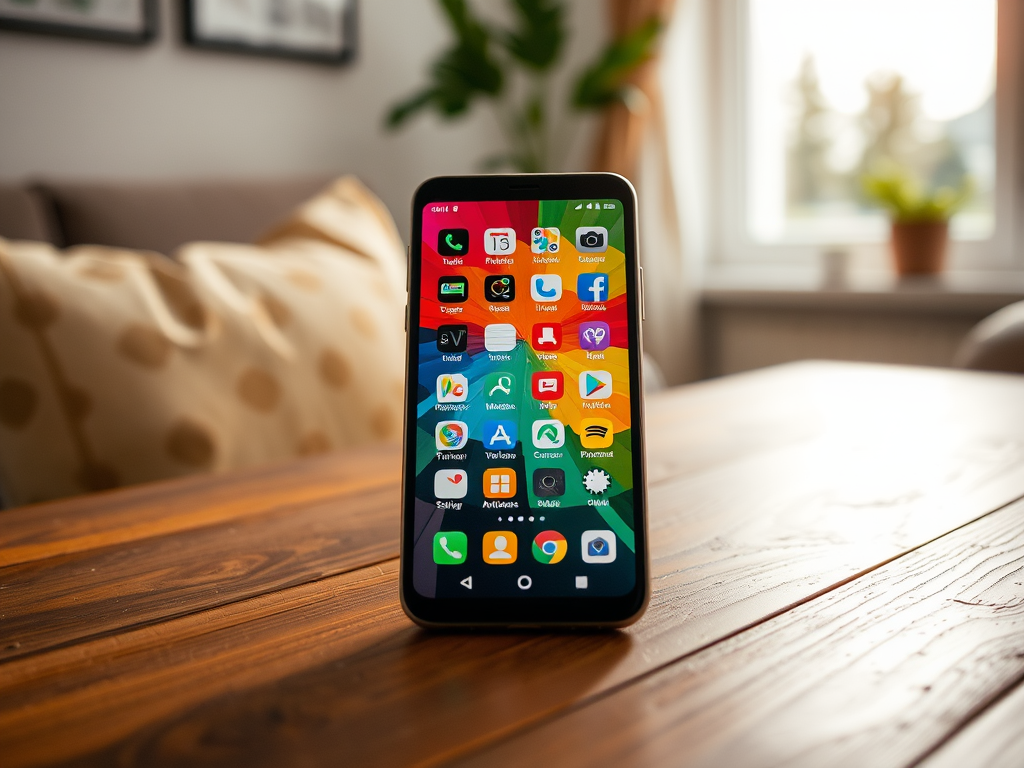In the universe of mobile device protection, the clash between tempered glasses and thermoplastic polyurethane (TPU) screen protectors rages with unwavering intensity. These guardians of our precious screens serve as the first line of defense against the dangers of daily life, but which material reigns supreme? Our main discussion revolves around whether TPU or tempered glass offers better protection for your devices, diving into how each option could also contribute to the longevity and functionality of your screen. The investigation of these plastic screens promises insight into the world of modern device protection, underscoring the high stakes of choosing between TPU films and their tempered glass counterparts.
Understanding Thermoplastic Polyurethane (TPU)
Composition and Characteristics of TPU
Thermoplastic polyurethane, or TPU, is a class of polyurethane plastics with many properties, including elasticity, transparency, and resistance to oil, grease, and abrasion. Unlike PET plastic, TPU materials are made by combining soft silicone with a harder, more rigid structure that gives them a malleable yet durable nature. This versatility allows TPU films to provide good protection against common threats such as scratches and minor impacts.
Advantages of TPU Screen Protectors
- Flexibility: TPU’s elastic nature allows it to absorb shocks and resist impacts better than rigid plastic ones.
- Self-healing: Minor scratches on TPU films may disappear over time, thanks to the material’s inherent ability to restore its original shape.
These advantages mean that a TPU screen protector is a good option for device owners who prioritize durability and longevity in their screen protectors. Not only does it provide good drop protection, but TPU is also known for adjusting to varying screen shapes, which is particularly useful for devices with curved displays.
Downsides to Using TPU
Despite its advantages, TPU might not be the perfect choice for every user. It’s thinner and less rigid than tempered glass, which means it will not provide the same level of protection against severe impacts and deep scratches. While TPU is a step up from the most basic PET films, it could also have a slightly tackier feel, which some users might find less pleasant to the touch.

Delving into Tempered Glass
Composition and Durability of Tempered Glass
Tempered glass is a type of safety glass processed by controlled thermal or chemical treatments to increase its strength compared with regular glass. Through this process, tempered glasses acquire a tensioned surface that is very resilient to direct strikes and sharp objects, ensuring that the screen beneath remains unscathed.
Benefits of Opting for Tempered Glass
- Clarity: They maintain a crystal-clear screen viewing experience, often feeling just like the original screen itself.
- Touch Sensitivity: The rigidity of glass does not interfere with the touch screen’s responsiveness, which ensures a seamless user experience.
As they are solid and have a certain degree of thickness, tempered glass protectors are a smart choice for those looking for the utmost in screen protection. Not only does their material type provide an impenetrable barrier against rough contact, but it also offers better protection against screen shattering.
Potential Drawbacks of Tempered Glass Protectors
However, tempered glasses also have their limitations. They are thicker and heavier than TPU films, which can make devices feel bulkier. Additionally, if a tempered glass protector does crack, it will require complete replacement whereas TPU might not, due to its resilience. Some users also find that tempered glass protectors could also interfere with the fitting of certain cases, resulting in a less secure phone enclosure.
Comparative Analysis: TPU vs Tempered Glass
| Feature | TPU | Tempered Glass |
|---|---|---|
| Durability | Flexible and durable, resists scratches and absorbs shocks, but may yellow over time. | Highly durable, resists deep scratches better than TPU, but can shatter upon high impact. |
| Protection Level | Offers good protection against scratches and minor impacts. | Provides superior protection against scratches and high impacts, resembling the original screen feel. |
| Clarity | Maintains decent screen clarity, but may not match the crispness of tempered glass. | Offers high-definition clarity, maintaining the original screen’s brightness and color accuracy. |
| Feel | Softer feel, may not replicate the glass feel of the screen exactly. | Mimics the original screen’s glass feel closely, providing a smooth touch experience. |
| Cost | Generally less expensive than tempered glass, offering a cost-effective solution. | More expensive due to its high-quality material and superior protection features. |
Protection Efficacy
Let’s talk protection—one of the hero features of any screen protector. When considering safeguarding your digital sidekick from dings and drops, is there a clear winner?
- TPU Material: Offers a shield that’s less about brute force resistance and more about a roll with the punches approach. It’s the material for those who face everyday wear and tear.
- Tempered Glass: Might not have the elasticity of TPU but brings a sturdier offense against the more catastrophic calamities that phones dread.
But let’s face it; neither will save the day during a face-off with a villainous plummet from the rooftop café. For those heart-drop moments, even the mightiest tempered glass or the most flexible TPU would bow out. Still, for the less dramatic fumbles and tumbles, tempered glass offers better fortification, while TPU guards well against constant, low-grade antagonists like keys and coins.
Sensitivity and Feel
In the tactile world of touchscreens, the feel can be just as critical as the function. Tempered glasses boast a sensation that mirrors the phone’s innate screen, unyielding and smooth—an ideal surface for the modern digital warrior. TPU, in the meantime, does not invade the realm of the touch experience grossly but offers a slightly different tactility—a bit more grip for fingers prone to slip. Choose your weapon wisely, for the battlefield of usability is vast and varied.

Clarity and Visibility
When looking at the screen clarity, tempered glass provides an unobstructed view that mimics the pristine original touch screen. This clarity comes from the stark transparency and the smooth surface that allows light to pass through without significant distortion. In other words, if you’re a purist about your display, tempered glass is your go-to.
TPU, on the other hand, despite being clear, might not always boast the same level of crispness that tempered glass offers. While some high-quality TPU films are almost as good as tempered glass in terms of clarity, they may sometimes exhibit a slight texture or less gloss, which could dim the display brightness or affect the screen’s sharpness marginally. For the average user, this difference may not be noticeable, but for the screen aficionados, tempered glass is the victor in the clarity contest.
Installation and Maintenance
Now, let’s dive into what it takes to get these protectors up and defending. TPU films are typically easier to install, given their flexibility. This forgiving nature means that you have a little more leeway when aligning the film on the device’s screen. Fewer air bubbles and a smoother application process make TPU a strong contender for those who prioritize a hassle-free setup.
Tempered glass protectors require more precision during installation; however, they are generally more forgiving when it comes to maintenance:
- Ease of cleaning: Oily fingerprints and smudges wipe away with greater ease from the glass.
- Durability of the surface: Tempered glass is less likely to accumulate scratches over time, keeping the looking-like-new period longer.
Despite these advantages, both types of protectors have come a long way in terms of the technology to ease the application process, often including foolproof installation kits.
Cost Considerations
For many, the decision comes down to the economics of protection—getting the most bang for your buck. Generally, TPU protectors are less expensive than their tempered glass counterparts. This price discrepancy is due to the material costs and the complexity of manufacturing tempered glass. If budget is a concern, here’s what to consider:
- Initial investment: TPU often costs less upfront than tempered glass.
- Longevity and replacement: Tempered glass may need less frequent replacements if not severely tested by trauma, potentially offsetting the initial higher cost.
However, when weighing cost-effectiveness, consider not just the protector’s price tag but also the screen it’s saving. After all, a cheaper screen protector that fails to prevent damage could lead to much higher costs in screen replacement.

The Verdict: Choosing the Right Protector for Your Screen
Determining which screen protector to enlist for your device is a mission that involves personal preferences and usage habits:
- If you’re seeking a blend of affordability, some flexibility for curved screens, and self-heal properties, TPU materials might be your ideal ally.
- For those who desire unequivocal clarity, touch response, and sturdy protection against life’s more turbulent events—tempered glass is there to rise to the occasion.
Conclusion
In the epic battle between thermoplastic polyurethane and tempered glass, each contender has strengths worthy of superhero status. TPU, with its self-healing prowess and flexibility, offers faithful defense against everyday abrasions and minor threats. Tempered glass, the stalwart guardian, stands firm against the sharper and heavier assaults. The balance of their powers—cost, clarity, touch sensitivity, and ease of use—must be weighed against the threats you foresee in your device’s future.
Ultimately, whether TPU or tempered glass, the quest for the perfect screen protector comes down to which danger your screen is more likely to face and your personal guardianship style. May your choice lead you to many bright and scratch-free days ahead.
FAQ
Frequently Asked Questions about TPU and Tempered Glass Screen Protectors
- Is TPU or tempered glass better for curved screens? TPU, with its flexibility, can contour more easily to curved screen edges, often providing a better fit than tempered glass, which might not adhere as snugly to curved surfaces.
- Do tempered glass screen protectors interfere with touch screen sensitivity? High-quality tempered glass protectors are precisely engineered to not impact the touch screen’s sensitivity. Most users report an experience that is nearly indistinguishable from the original screen.
- Can TPU screen protectors really ‘self-heal’ minor scratches? Yes, TPU screen protectors have a degree of self-healing capability for light scratches due to their elastic properties. However, more profound marks might not disappear completely.
- How often should I replace my screen protector? Replacement frequency depends on the wear and tear your device endures. If you notice significant scratches or cracks in your protector, or if there’s a decrease in touch sensitivity, it’s time for a new one.
- Does the thickness of a tempered glass protector add significant bulk to devices? While tempered glass protectors are indeed thicker than TPU ones, advancements in technology have led to the development of ultra-thin tempered glass that minimizes added bulk while maintaining protection levels.



